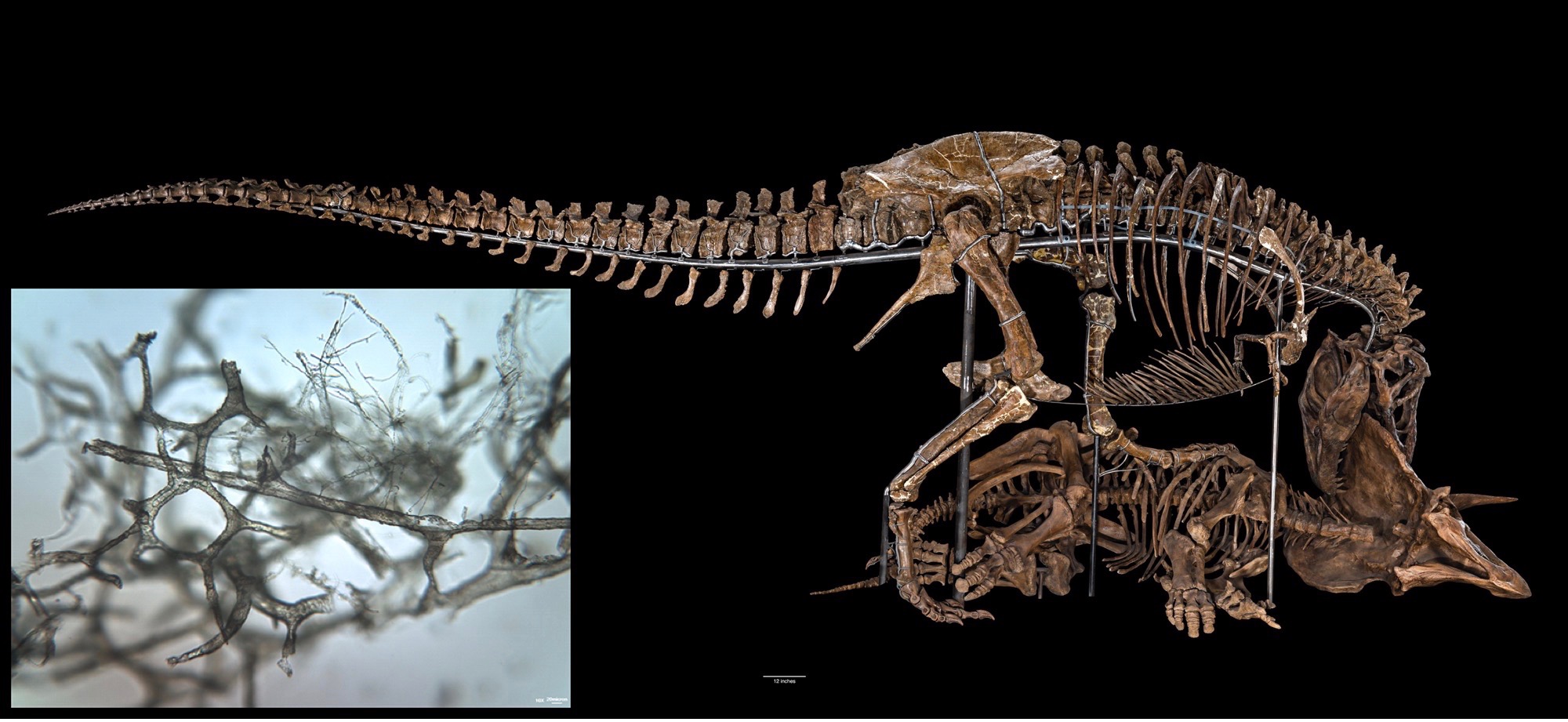Using techniques available at the Advanced Light Source (ALS), researchers led by Elizabeth Boatman, formerly at UC Berkeley and now at UW-Stout, demonstrated how soft-tissue structures may be preserved in dinosaur bones, countering long-standing scientific dogma that protein-based body parts cannot survive more than one million years.
A sample from a 66-million-year-old Tyrannosaurus rex tibia provided evidence that vertebrate blood vessels—predominantly composed of collagen and elastin, which don’t fossilize the same way as mineral-based bone—may persist across geologic “deep time” through two natural, protein-fusing (“cross-linking”) processes: Fenton chemistry and glycation.
Boatman used small-angle x-ray scattering (SAXS) at Beamline 7.3.3 to help establish that the specimen is indeed the animal’s original collagen-based tissue because the vessel structures possessed periodic features consistent with modern collagen fibers. To understand how this collagen-based tissue is preserved, the team conducted further investigations.
Using x-ray fluorescence (XRF) mapping, iron K-edge x-ray absorption near-edge structure (XANES) spectroscopy, and x-ray diffraction (XRD) at Beamline 10.3.2, the team discovered the presence of finely crystalline goethite (α-FeOOH), a known product of cross-linking processes.
Simultaneously, modern tissues treated with the proposed cross-linking mechanisms were compared to the dinosaur vessels using Fourier-transform infrared spectromicroscopy (FTIR) at Beamlines 1.4 and 5.4. By revealing protein-folding patterns, FTIR indicated that both cross-linking mechanisms have occurred.
The team concluded that Fenton chemistry and glycation likely contributed to collagen preservation in the dinosaur vessels. These cross-linking reactions, combined with the protection offered by the dense mineral of the dinosaur’s large tibia bone, begin to explain how original soft tissues persist.

E.M. Boatman, M.B. Goodwin, H.-Y.N. Holman, S. Fakra, W. Zheng, R. Gronsky, and M.H. Schweitzer, “Mechanisms of soft tissue and protein preservation in Tyrannosaurus rex,” Sci. Rep. 9, 15678 (2019), doi: 10.1038/s41598-019-51680-1.
Adapted from the Berkeley Lab Science Snapshot, “Berkeley Lab Helps Reveal How Dinosaur Blood Vessels Can Preserve Through the Ages.”